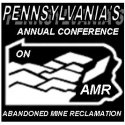EPCAMR respects that internal state programs need money to operate and that environmental staffing has plummeted in the new millennium. However, the answer to agency needs lays with the General Fund—the appropriate source for general government operations—not in special funds dedicated to investing in projects and to leveraging the incredible energy and resources existing in our communities. See our letter of opposition.
The Need:
Pennsylvania’s environmental funding needs are huge. Pressing water issues—from water quality investments needed for the Susquehanna and Chesapeake and Pennsylvania’s other water basins to municipal stormwater management and flood reduction measures—hundreds of millions if not billions of dollars are needed in the coming years. The proposed budget diversion would worsen the needs as it would effectively take money away from communities as they work to address stormwater, flooding, water treatment, abandoned mine drainage remediation, abandoned mine land reclamation, and other environmental issues.
The Keystone Fund delivers $7 in flood control and prevention, water treatment, and other natural services for every dollar invested. (See Pennsylvania’s Return on Investment in the Keystone Recreation, Park and Conservation Fund and other studies in the Economic Benefits section of https://conservationtools.org.) Now is the time to strengthen Pennsylvania’s dedicated environmental funds, so that they can deliver more, not less, in project investments.
Looking beyond water issues, our parks, trails, and other outdoor recreational spaces all have pressing needs. A new report identifies a billion dollars in deferred maintenance in our state parks and forests. (See https://paparksandforests.org/initiatives/infrastructurestudy/.)
Conclusions:
A portion of the realty transfer tax was dedicated to the Keystone Recreation, Park and Conservation Fund in 1993 and landfill tipping fees were enacted to fund the Environmental Stewardship Fund in 1999 (and expanded in 2002) in order to reinvest in our communities, redress the environmental damage of the past, and respect our generations yet to come. Both funds were established with extraordinary bipartisan support in the General Assembly as well as in public referenda. The public’s enthusiasm continues to be overwhelming: 75% of Republican voters, 82% of Democrats, and 87% of independents support taxing themselves more to expand conservation funding. (See survey results at https://conservationtools.org/conservation-benefits/205.)
The Governor’s budget proposal threatens to upend decades of bipartisan consensus on the need to maintain the dedication of the Keystone Fund and ESF so that they may consistently invest in projects that deliver today and will continue delivering for future generations.
The Governor’s new RESTORE PA initiative is a positive step in the right direction. EPCAMR supports a severance tax on industry to accomplish these infrastructure goals. EPCAMR has been working in underserved communities on abandoned mine reclamation, abandoned mine drainage (AMD) remediation, flooding prevention, stormwater management, sediment reduction projects, watershed restoration, economic development of blighted abandoned mine lands, infrastructure improvement projects, riparian corridor restoration, trout stream restoration and protection, and innovative approaches to understanding underground mine pools throughout the coalfields of PA.











